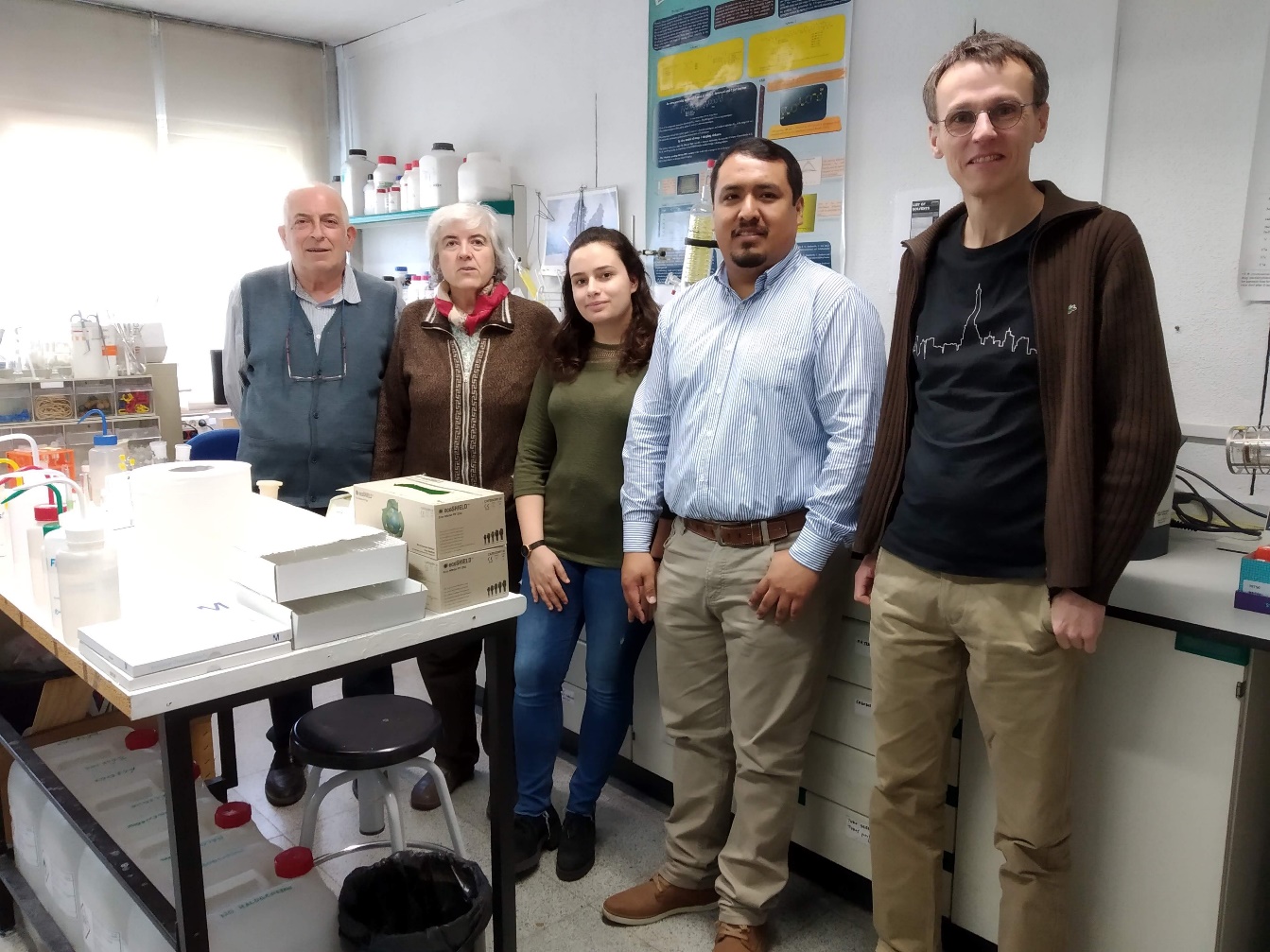1) Ebiloma, G.; Balogun, E.; Cueto‐Díaz, E.; De Koning, H.; Dardonville, C. Alternative oxidase inhibitors: Mitochondrion‐targeting as a strategy for new drugs against pathogenic parasites and fungi. Med. Res. Rev. 2019, DOI: 10.1002/med.21560.
2) Meco Navas, A; Ebiloma, GU; Martín Domínguez, A; Martínez Benayas, I; Cueto-Diaz, EJ; Saud Alhejely, A; Balogun, EO; Saito, M; Matsui, M; Arai, N; Shiba, T; Harada, S; de Koning, HP; Dardonville, C. SAR of 4-Alkoxybenzoic acid inhibitors of the trypanosome alternative oxidase. ACS Med. Chem. Lett. 2018, 9, 923-928.
3) Ebiloma, G. U.; Díaz Ayuga, T.; Balogun, E. O.; Gil, L. A.; Donachie, A.; Kaiser, M.; Herraiz, T.; Inaoka, D. K.; Shiba, T.; Harada, S.; Kita, K.; de Koning, H. P.; Dardonville, C. Inhibition of trypanosome alternative oxidase without its N-terminal mitochondrial targeting signal (ΔMTS-TAO) by cationic and non-cationic 4-hydroxybenzoate and 4-alkoxybenzaldehyde derivatives active against T. brucei and T. congolense. Eur. J. Med. Chem. 2018, 150, 385-402.
4) C. Fonseca-Berzal, A. Ibáñez-Escribano, N. Vela, J. Cumella, J. J. Nogal-Ruiz, J. A. Escario, P. B. da Silva, M. M. Batista, M. N. C. Soeiro, S. Sifontes-Rodríguez, A. Meneses-Marcel, A. Gómez-Barrio, V. J. Arán, Antichagasic, leishmanicidal and trichomonacidal activity of 2-benzyl-5-nitroindazole-derived amines, ChemMedChem 2018, 13, 1246-1259.
5) A. Meneses-Marcel, Y. Marrero-Ponce, A. Ibáñez-Escribano, A. Gómez-Barrio, J. A. Escario, S. J. Barigye, E. Terán, C. R. García-Jacas, Y. Machado-Tugores, J. J. Nogal-Ruiz, V. J. Arán-Redó, Drug repositioning for novel antitrichomonas from known antiprotozoan drugs using hierarchical screening, Fut. Med. Chem. 2018, 10, 863-878.
6) R. Martín-Escolano, B. Aguilera-Venegas, C. Marín, Á. Martín-Montes, J. Martín-Escolano, E. Medina-Carmona, V. J. Arán, M. Sánchez-Moreno, Synthesis and biological in vitro and in vivo evaluation of 2-(5-nitro-1-indazolyl)ethylamines and related compounds as potential Chagas disease therapeutic alternative, ChemMedChem 2018, 13, 2104-2118.
7) C. Fonseca-Berzal, V. J. Arán, J. A. Escario, A. Gómez-Barrio, Experimental models in Chagas disease: a review of the methodologies applied for screening compounds against Trypanosoma cruzi. Parasitol Res. 2018, 117, 3367-3380.
8) Millan, C.; Acosta-Reyes, F.; Lagartera, L.; Ebiloma, G.; Lemgruber, L.; Nué Martinez, J.J.; Saperas, N.; Dardonville, C.; de Koning, H.; Campos, J.L. Functional and structural analysis of AT-specific minor groove binders that disrupt DNA-protein interactions and cause disintegration of the Trypanosoma brucei kinetoplast. Nucleic Acids Res. 2017, 45, 8378-8391.
9) Fueyo González, F. J.; Ebiloma, G. U.; Izquierdo García, C.; Bruggeman, V.; Sánchez Villamañán, J. M.; Donachie, A.; Balogun, E. O.; Inaoka, D. K.; Shiba, T.; Harada, S.; Kita, K.; de Koning, H. P.; Dardonville, C. Conjugates of 2,4-dihydroxybenzoate and salicylhydroxamate and lipocations display potent anti-parasite effects by efficiently targeting the Trypanosoma brucei and Trypanosoma congolense mitochondrion. J. Med. Chem. 2017, 60, 1509–1522.



